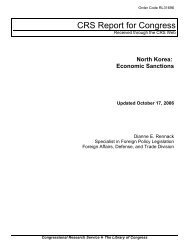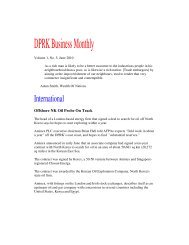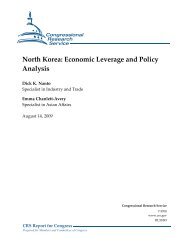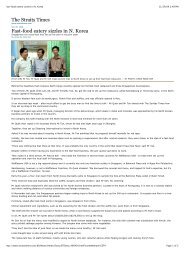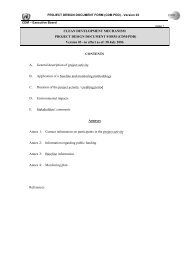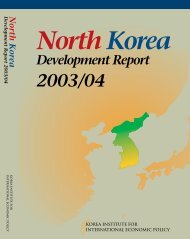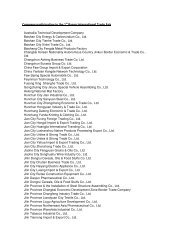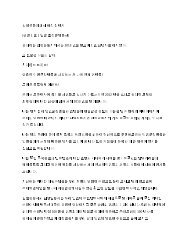North Korean Policy Elites - Defense Technical Information Center
North Korean Policy Elites - Defense Technical Information Center
North Korean Policy Elites - Defense Technical Information Center
Create successful ePaper yourself
Turn your PDF publications into a flip-book with our unique Google optimized e-Paper software.
Until the 1990s, the electronic media were divided into two systems, television and radio.<br />
During the late 1990s, KCNA established an Internet website and began releasing stories and<br />
announcements on a daily basis.<br />
The three principal television stations within the DPRK are <strong>Korean</strong> Central Television<br />
(KCTV), Mansudae TV, and Kaesong TV. The KCTV network is by far the largest and covers<br />
almost the entire nation. Its programming includes news, educational, and entertainment shows;<br />
however, it mimics the print media in praising Kim Chong-il, publicizing KWP policies and<br />
denouncing the ROK and the United States. Mansudae TV can be considered the cultural<br />
channel of the DPRK’s electronic media, as its primary programming is art and movie programs.<br />
It only broadcasts on weekends and special occasions in the P’yongyang area. Kaesong TV is<br />
used almost exclusively for propaganda broadcasts to the ROK.<br />
The leading radio station in the DPRK is the <strong>Korean</strong> Central Broadcasting Station<br />
(KCBS). Its broadcasts consist of domestic and foreign programs and can be heard in eight<br />
languages besides <strong>Korean</strong>. Programming is similar to the print media, although there are a larger<br />
percentage of press reports from the <strong>Korean</strong> Central News Agency and there are a number of<br />
programs for children and youth. Radio Pyongyang broadcasts to the ROK with programs<br />
extolling the virtues of Chuch’e, the superiority of the DPRK, criticisms of ROK society, etc.<br />
This station is under the direct control of the KWP’s Unification Front Department.<br />
In addition to these radio stations, there is the “Voice of National Salvation” (VNS)<br />
allegedly the clandestine radio station of the underground National Democratic Front<br />
(Hanminjon) broadcasting from somewhere within the ROK. In reality, its transmitter is in Haeju,<br />
and the “Chilbosan Liaison Office” - a component of the KWP’s intelligence system - manages<br />
the station. It broadcasts propaganda that is directed specifically towards ROK children and<br />
youth. The staff of the Chilbosan Liaison Station includes a high percentage of defectors from<br />
the ROK, a number of whom have permission to listen to ROK radio broadcasts and watch ROK<br />
television in order to become familiar with the words, customs, and popular feeling within the<br />
ROK, thereby making the VNS broadcasts more authentic.<br />
The <strong>Korean</strong> Central News Agency (KCNA) is the DPRK’s only press agency. On the<br />
surface, it generally functions like other press agencies, receiving foreign wire dispatches and<br />
conveying them to newspapers and radio stations, maintaining contracts with foreign news<br />
agencies, employing overseas correspondents, etc. In reality it focuses on publicizing the<br />
DPRK’s positions to the world and is under the same stringent censorship as all the other DPRK<br />
media outlets.<br />
I-A-2



